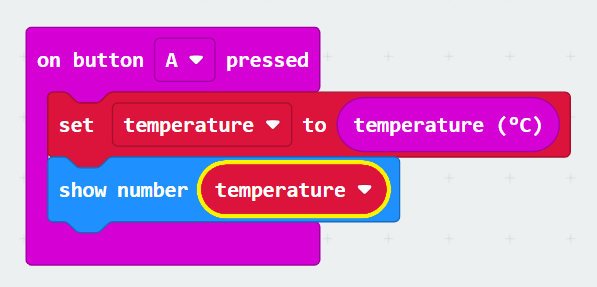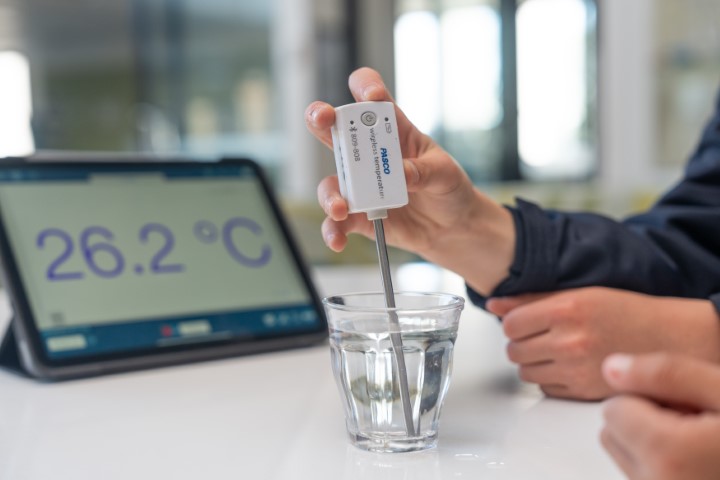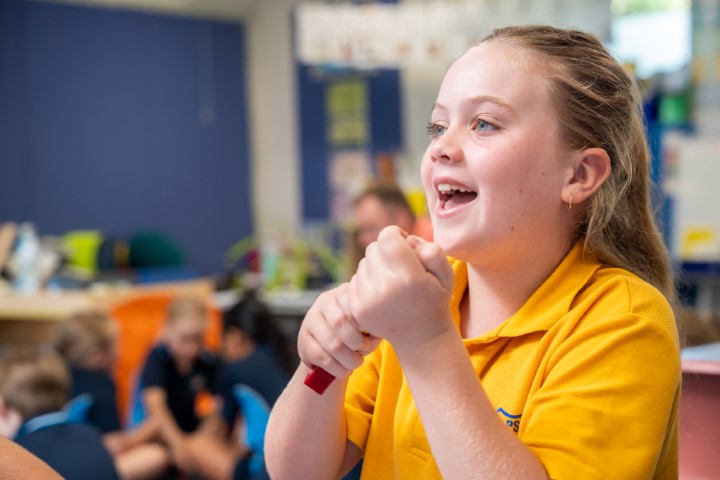Scorching swings and slides
View Sequence overviewStudents will:
- conduct an investigation about the transfer of heat to different surfaces.
- make predictions and claims about what happens to the temperature of different surfaces when warmed by the heat of the sun.
- observe, record and interpret the results of their investigation.
- identify the differences in conductivity of materials.
Students will represent their understanding as they:
- use oral, written and visual language to record and discuss investigation results.
- record data in a table.
- discuss findings and compare results.
In this lesson, assessment is formative.
Feedback might focus on:
- the claims students make about the temperature of the ground surfaces. Have groups made similar or different claims? Why might that be?
- if students’ claims are supported by the evidence they have collected.
- how students relate their learning to the context of playground design. What ground surface would they choose and is that choice supported by evidence?
Whole class
Class science journal (hard-copy or digital)
Demonstration copy of Ground surface temperature investigation Resource sheet (or create your own)
Each group
Instruments to measure temperature, for example glass or radar/surface area thermometers (if not possible to source, students can use a ‘hotness scale’ determined by touch)
Different ground surfaces that are in direct sunlight
Each student
Individual science journal (hard-copy or digital)
Ground surface temperature investigation Resource sheet (or create their own)
Lesson
The Inquire phase allows students to cycle progressively and with increasing complexity through the key science ideas related to the core concepts. Each Inquire cycle is divided into three teaching and learning routines that allow students to systematically build their knowledge and skills in science and incorporate this into their current understanding of the world.
When designing a teaching sequence, it is important to consider the knowledge and skills that students will need in the final Act phase. Consider what the students already know and identify the steps that need to be taken to reach the level required. How could you facilitate students’ understanding at each step? What investigations could be designed to build the skills at each step?
Read more about using the LIA FrameworkRe-orient
Review the previous lesson. Focus on how the heat from the heat source was transferred to the metal spoon, and how the spoon did not remain hot when it was no longer in contact with the heat source.
The Inquire phase allows students to cycle progressively and with increasing complexity through the key science ideas related to the core concepts. Each Inquire cycle is divided into three teaching and learning routines that allow students to systematically build their knowledge and skills in science and incorporate this into their current understanding of the world.
When designing a teaching sequence, it is important to consider the knowledge and skills that students will need in the final Act phase. Consider what the students already know and identify the steps that need to be taken to reach the level required. How could you facilitate students’ understanding at each step? What investigations could be designed to build the skills at each step?
Read more about using the LIA FrameworkIdentifying and constructing questions is the creative driver of the inquiry process. It allows students to explore what they know and how they know it. During the Inquire phase of the LIA Framework, the Question routine allows for past activities to be reviewed and to set the scene for the investigation that students will undertake. The use of effective questioning techniques can influence students’ view and interpretation of upcoming content, open them to exploration and link to their current interests and science capital.
When designing a teaching sequence, it is important to spend some time considering the mindset of students at the start of each Inquire phase. What do you want students to be thinking about, what do they already know and what is the best way for them to approach the task? What might tap into their curiosity?
Read more about using the LIA FrameworkWhat are the different ground surfaces?
Refer back to the section of the mind map created in the Launch phase where students identified the kinds of ground/floor surfaces found in a playground.
- What type of ground/floor surfaces do we find in playgrounds?
- grass, asphalt, wood chips, sand, exposed dirt, soft-fall, astroturf etc.
- What do you think will happen to these surfaces when they are exposed to the sun (heat source) on a hot, sunny day?
- Why do you think this will happen?
- Which surface do you think will become the hottest and why?
- How can we determine how hot each surface gets?
By referring back to the student questions asked during the Launch phase, and through questioning and discussion, determine that, in learning about how heat impacts on playgrounds, it would be advantageous to know which of the common ground surfaces found in playgrounds heat up the most in the sun.
Incorporating digital technology
Students can use Micro:bits to measure the temperature of a surface.

A Micro:bit is a programmable device that allows students to develop experience with very simple coding. Each Micro:bit has a temperature sensor in its processor. Use the code shown above in MakeCode to display the current temperature on its LED screen. Students can use this to test the temperature of different surfaces.
A Micro:bit is a programmable device that allows students to develop experience with very simple coding. Each Micro:bit has a temperature sensor in its processor. Use the code shown above in MakeCode to display the current temperature on its LED screen. Students can use this to test the temperature of different surfaces.
The Inquire phase allows students to cycle progressively and with increasing complexity through the key science ideas related to the core concepts. Each Inquire cycle is divided into three teaching and learning routines that allow students to systematically build their knowledge and skills in science and incorporate this into their current understanding of the world.
When designing a teaching sequence, it is important to consider the knowledge and skills that students will need in the final Act phase. Consider what the students already know and identify the steps that need to be taken to reach the level required. How could you facilitate students’ understanding at each step? What investigations could be designed to build the skills at each step?
Read more about using the LIA FrameworkThe Investigate routine provides students with an opportunity to explore the key ideas of science, to plan and conduct an investigation, and to gather and record data. The investigations are designed to systematically develop content knowledge and skills through increasingly complex processes of structured inquiry, guided inquiry and open inquiry approaches. Students are encouraged to process data to identify trends and patterns and link them to the real-world context of the teaching sequence.
When designing a teaching sequence, consider the diagnostic assessment (Launch phase) that identified the alternative conceptions that students held. Are there activities that challenge these ideas and provide openings for discussion? What content knowledge and skills do students need to be able to complete the final (Act phase) task? How could you systematically build these through the investigation routines? Are there opportunities to build students’ understanding and skills in the science inquiry processes through the successive investigations?
Read more about using the LIA FrameworkWhich ground surface gets the hottest?
Determine which ground surfaces students can reasonably test in your school environment.
Discuss what would be the best way to gather data to determine which surface is going to be the hottest throughout the day, and how students might record this data: taking a measure of temperature at selected intervals over the course of the day and recording in a data table.
Decide how students will take these measurements:
- NO TECH: Using a hotness scale determined by each group. You will need to discuss how to keep this manner of determining temperature as fair as possible.
- LOW TECH: Use a glass thermometer, placed on the surface for a specific time period before measurements are read.
- HIGH TECH: Use a radar/surface temperature thermometer.
Discuss if it would be fair to measure (for example) the temperature of grass under a tree, as opposed to asphalt that has been in the full sun. Determine that it is most fair/accurate to take temperature measurements of these surfaces in full sun to find out which one gets the hottest in the sun.
The height off the ground can also impact the measured temperature. Discuss how this could be made consistent in their measurements. You might use a variables grid to model the identification of variables, and how selecting one to change whilst leaving the rest the same helps to keep an investigation fair.
In collaborative teams, students select three surfaces for which they will take temperatures at intervals throughout the day. How often these temperatures are taken is dependent on teacher preference, resources available and the needs of the students. However, it is recommended that temperatures are taken at least three times during the day—in the morning, around midday, and in the afternoon.
Students record their data in a data table.
After the final temperature measurements have been taken, allow students time to analyse their results, and encourage them to, as a group, make a claim about which surface heats up the most in the sun, referring to their data as proof.
Teams might complete a sentence stem such as “The ground surface that gets hottest in the sun is… We think this because…”
Links to mathematics: Temperature
When measuring the temperature of an object we order it on a scale of ‘hotness’, comparing it to what is hotter or less hot.

Temperature is quantitative expression of the attribute of ‘hotness’. In mathematics, attributes allow for ordering, grouping and comparing similar objects. When measuring the temperature of an object we order it on a scale of hotness, comparing it to what is hotter or less hot.
In this process of placing objects on the scale of hotness (and indeed in other instances of measurement that take place when collecting scientific data), students will often see and work with parts of a whole, particularly in decimal form, long before it is introduced in the mathematics curriculum.
What is important at this year level is not necessarily the understanding of decimal value (although students may have some understanding through their learning of fractions), but its use as a means to order the temperature along the hotness scale. By focusing on this you can link their learning to representation and ordering in the Number strand, and to measuring and comparing objects in the Measurement strand.
Temperature is quantitative expression of the attribute of ‘hotness’. In mathematics, attributes allow for ordering, grouping and comparing similar objects. When measuring the temperature of an object we order it on a scale of hotness, comparing it to what is hotter or less hot.
In this process of placing objects on the scale of hotness (and indeed in other instances of measurement that take place when collecting scientific data), students will often see and work with parts of a whole, particularly in decimal form, long before it is introduced in the mathematics curriculum.
What is important at this year level is not necessarily the understanding of decimal value (although students may have some understanding through their learning of fractions), but its use as a means to order the temperature along the hotness scale. By focusing on this you can link their learning to representation and ordering in the Number strand, and to measuring and comparing objects in the Measurement strand.
Collecting data: Hotness scale
Determining temperature through touch (or proximity) is common and valid. However, it is important to acknowledge the limitations of this method.

Using our sense of touch is one, albeit inaccurate, way to determine the temperature of an object or substance. Determining temperature through touch (or proximity) is common and valid. However, it is important to acknowledge the limitations of this method, particularly when it comes to the scientific collection of data.
You might discuss with students how their own body temperature can distort the accuracy of their measurements, that no two people are going to ‘sense’ the exact same temperature—what is warm to one might be cold to another. Establish methods of using a hotness scale in the ‘most fair’ way possible. Teams might decide to select only one student to be the ‘official measurer’, or they might all feel an object, rate it on a pre-determined scale and use this to reach consensus about the object’s temperature.
Using our sense of touch is one, albeit inaccurate, way to determine the temperature of an object or substance. Determining temperature through touch (or proximity) is common and valid. However, it is important to acknowledge the limitations of this method, particularly when it comes to the scientific collection of data.
You might discuss with students how their own body temperature can distort the accuracy of their measurements, that no two people are going to ‘sense’ the exact same temperature—what is warm to one might be cold to another. Establish methods of using a hotness scale in the ‘most fair’ way possible. Teams might decide to select only one student to be the ‘official measurer’, or they might all feel an object, rate it on a pre-determined scale and use this to reach consensus about the object’s temperature.
The Inquire phase allows students to cycle progressively and with increasing complexity through the key science ideas related to the core concepts. Each Inquire cycle is divided into three teaching and learning routines that allow students to systematically build their knowledge and skills in science and incorporate this into their current understanding of the world.
When designing a teaching sequence, it is important to consider the knowledge and skills that students will need in the final Act phase. Consider what the students already know and identify the steps that need to be taken to reach the level required. How could you facilitate students’ understanding at each step? What investigations could be designed to build the skills at each step?
Read more about using the LIA FrameworkFollowing an investigation, the Integrate routine provides time and space for data to be evaluated and insights to be synthesized. It reveals new insights, consolidates and refines representations, generalises context and broadens students’ perspectives. It allows student thinking to become visible and opens formative feedback opportunities. It may also lead to further questions being asked, allowing the Inquire phase to start again.
When designing a teaching sequence, consider the diagnostic assessment that was undertaken during the Launch phase. Consider if alternative conceptions could be used as a jumping off point to discussions. How could students represent their learning in a way that would support formative feedback opportunities? Could small summative assessment occur at different stages in the teaching sequence?
Read more about using the LIA FrameworkSurface temperature claims
Teams present their findings, including their claims about which ground surface got the hottest.
- Which of the ground surfaces you tested reached the highest temperature during the day?
- If measurements were taken using a thermometer, what temperature did it reach?
- Did anyone else measure the same surface and find the same results? Different result? Why do you think this happened?
- Out of all the surfaces that were monitored, which was the hottest? Which stayed the coolest?
- Consider recording and averaging class results and why it would be the most accurate to make claims using the averaged data.
- What does this mean about the ground surfaces that are included in a playground?
- Will the ground stay hot forever after it’s been heated? Why do you think that?
- Where does the heat go?
The class/audience is encouraged to agree or disagree with the findings, or question the presenting team using science question starters.
Reflect on the lesson
You might:
- review the questions in the class science journal. Determine which questions have been answered during the session and add any new questions that have arisen.
- reflect on how this learning is relevant to learning about the impact of heat on a playground:
- What happens to the temperature of an unshaded ground surface during the course of a hot sunny day?
- What does that mean for the temperature of a playground? Why would we need to think about that when we design a playground?
- What could we do to stop the ground from getting so hot?
- add to the class word wall.
- re-examine the intended learning goals for the lesson and consider how they were achieved.
- discuss how students were thinking and working like scientists during the lesson. Focus on how they asked questions, devised a way to investigate to find an answer, collected data and the used that data to make claims to answer their questions.
- discuss the importance of sharing and debating evidence.
Productive science discussion: Argumentation
Probing and challenge questions support students to make claims and to justify them with evidence.

The probing and challenge questions provided as potential discussion prompts are designed to support students to begin to make claims about the transfer of heat, and to justify these claims with evidence.
The class should be encouraged to ask questions of each team to find out more about their investigation methods, conclusions and evidence.
The probing and challenge questions provided as potential discussion prompts are designed to support students to begin to make claims about the transfer of heat, and to justify these claims with evidence.
The class should be encouraged to ask questions of each team to find out more about their investigation methods, conclusions and evidence.